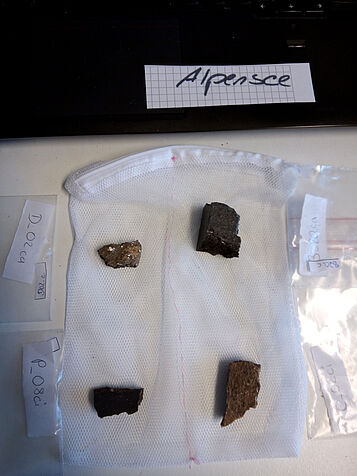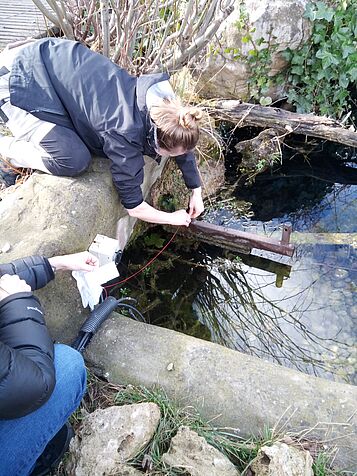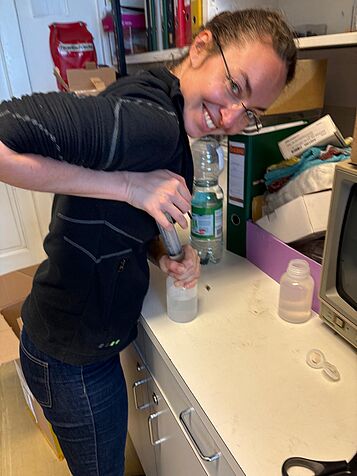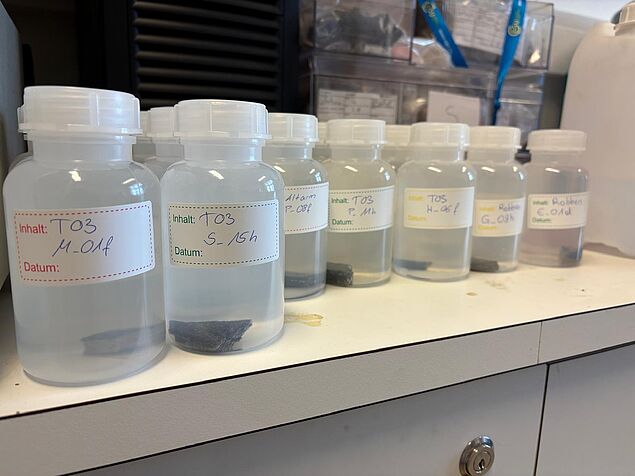The effects of waterlogging on archaeological pottery
Experiments started in March 2025
Can we still use p-XRF to reliably interpret the provenance and production of pottery, such as that uncovered from lake dwellings, after it has been submerged in water for thousands of years? That’s the central question behind this study.
Following the Pilot Study conducted with Dr. Donjá Aßbichler and her team, the next step was to broaden the investigation and explore how a wide range of natural waters affect pottery under realistic and controlled conditions. For this, the project partnered with Mag. Regina Kramer MSc of Tiergarten Schönbrunn in Vienna, whose aquaria offer access to diverse aquatic environments, from Amazonian waters to northern marine systems and local Viennese sources.
12 archaeological pottery sherds of the project’s reference collection from Austria and Germany were selected based on differences in major element composition (especially Ca, K, P, Fe, Al, and Si). Fragments from each sherd were distributed across 8 aquaria, with each pottery type placed in at least two, and mostly three, different tanks. Submersion began in March 2025.
Every two months, these fragments are removed, dried, and analysed with p-XRF to monitor chemical changes over time. Water samples from each tank are also analysed by p-XRF and sent to the lab for further geochemical evaluation.
In parallel, accelerated leaching experiments are being conducted with powdered material from the same pottery sample set. The powders are placed in water collected directly from the corresponding aquaria in March 2025.
Additionally, pottery fragments are submerged in this same aquarium water under static, non-living conditions. These tests replicate the method used in the pilot study and serve as a simplified comparison to the dynamic aquarium environments. These samples and waters are also analysed on a two-month schedule.
At the conclusion of the experiment, all samples, whether aquarium-submerged, powdered, or statically stored, will be re-analysed using p-XRF, XRD, FTIR, and ICP-MS to evaluate the nature and extent of compositional changes, allowing to determine whether p-XRF analysis is still reliable.
Impressions from the experiment:
Pilot Study
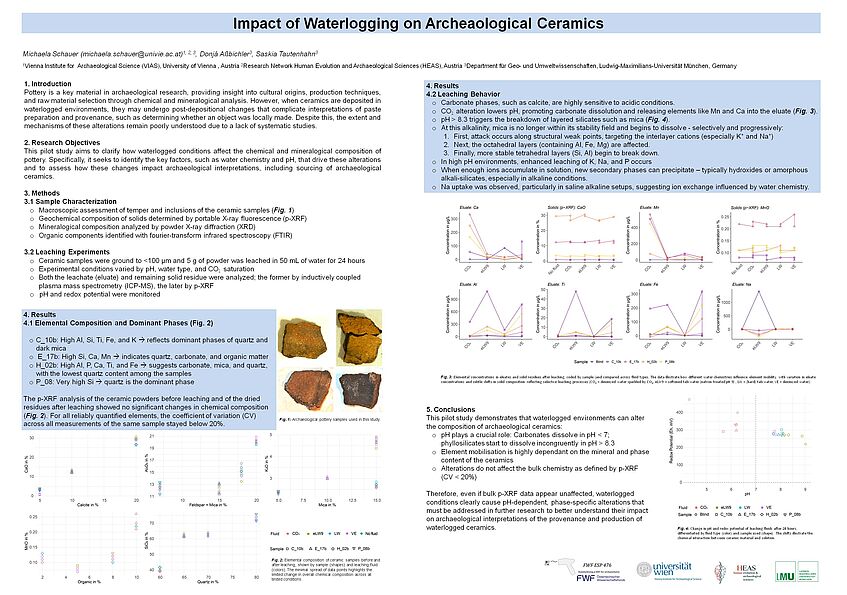
Pilot Study
It is currently unclear whether waterlogged environments significantly alter the chemical composition of archaeological pottery in a way that would compromise p-XRF results. To investigate this, the project partnered with Donjá Aßbichler and her team at the Geology Lab of Ludwig-Maximilians-Universität Munich.
Post-depositional environments - especially waterlogging - may change pottery in subtle but important ways. This study simulates such conditions to evaluate whether those changes are detectable, and whether they matter for archaeological interpretations.
Pottery samples from the project’s reference collection were subjected to controlled leaching experiments under varied pH, water chemistries, and CO₂ levels. Both the eluates and the solid residues were analysed using a range of methods, with a focus on p-XRF. Supporting techniques included XRD, FTIR, and ICP-MS to assess mineral and elemental changes.
The results show that while p-XRF measurements of bulk composition remained largely stable (CV < 15%), mineral-specific and phase-dependent alterations did occur. Acidic conditions dissolved carbonates, while alkaline environments triggered the breakdown of phyllosilicates and enhanced the leaching of elements such as K, Na, and P.
The results of this pilot study were presented at EGU 2025: Schauer, M., Aßbichler-Praschl, D., Tautenhahn, S., 2025, Impact of Waterlogging on Archeaological Ceramic. Posterpresentation. EGU 2025, 29 April 2025, Vienna.

